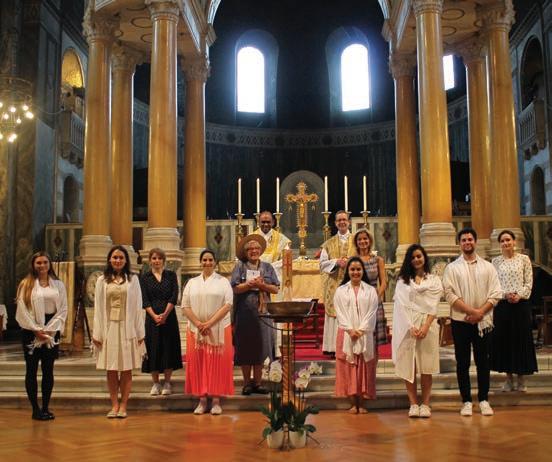MEDIEVAL SURVIVALS IN OXFORD
The ‘Laudian Vestments’ of St John’s College Part 2 Fr John Scott St John’s holds some precious survivals from its foundation in the form of 15th and 16th-century ecclesiastical fabrics, many of them plausibly provided for the use of the new College’s chapel. These have become known as the ‘Laudian vestments’, named after William Laud, Archbishop of Canterbury (1633 – 1645), who had been President of the College for 10 years from 1611. How did these vestments survive? The College muniments have an inventory of 14 April 1602 which lists: ‘such old superstitiouse church ornaments as weare given and delyvered unto me Raphe Huchenson, President … by Mrs Amy Leech, wydowe, our good founder’s sister’s daughter, to be converted to the benefit and better use for the sayd Colledge, to which (as is supposed) it sometime did appertayne’. The Founder’s niece had apparently kept the vestments at his manor house of Fyfield from 1573 onwards, when the President’s Lodgings were enlarged by appropriating the vestry in which the ‘oold stuff’ was kept. Since its return to the College in 1602, the collection has remained largely intact, despite subsequent Puritan attempts at confiscation and the conversion of some items into altar cloths, frontal, pulpit-cloths and cushion covers for the Chapel. In 1646, for instance, it was noted that two pulpit cloths were taken from the Chapel: ‘upon an order from ye lords to inquire after and demande from ye Governours of ye colleges in Oxon, alle reliques of superstittion and poperie’. Some of the items must have formed part of the original equipment of the Chapel in 1557, when it was furnished by Sir Thomas White, as Founder, with ‘divers utensils, ornaments, vestments, copes, crucifixes etc.’. Some may also have belonged to Archbishop Laud and been given by him to the College.
This heavily embroidered fabric, now a cushion, shows the Magi worshipping the Infant Christ, who is seated on the lap of the Virgin. To the left a shepherd leans on his crook, whilst his sheep have distinctly individual faces. There is lively depiction of trees and flowers with St Joseph (bearded) to the rear beneath a shelter.
12
It appears that a cope has here been cut down into a rectangular shape. The decoration of two-headed eagles, fleurs-de lys and angels surrounds Our Lady assumed and crowned, supported by angels. The whole collection is a reminder of how central Marian piety was to medieval England, acknowledged and offered as her Dowry. Oremus
November 2020



















